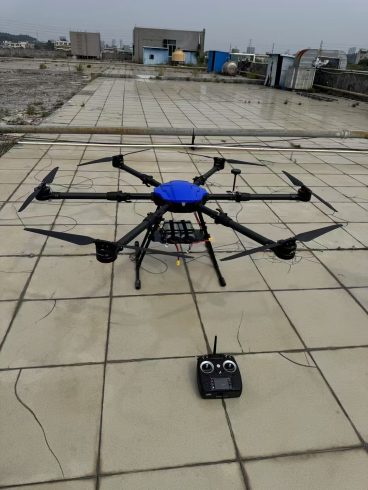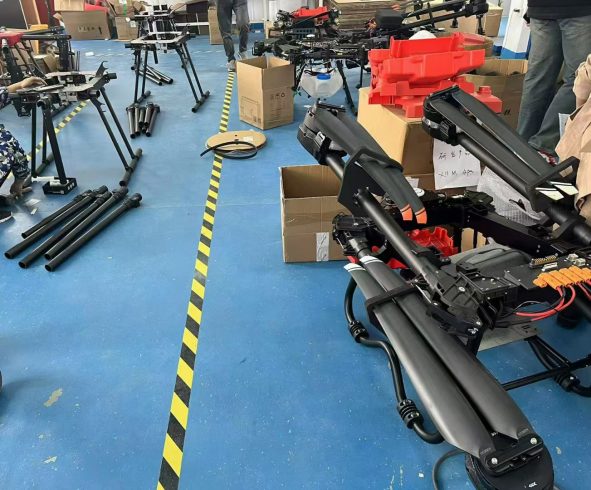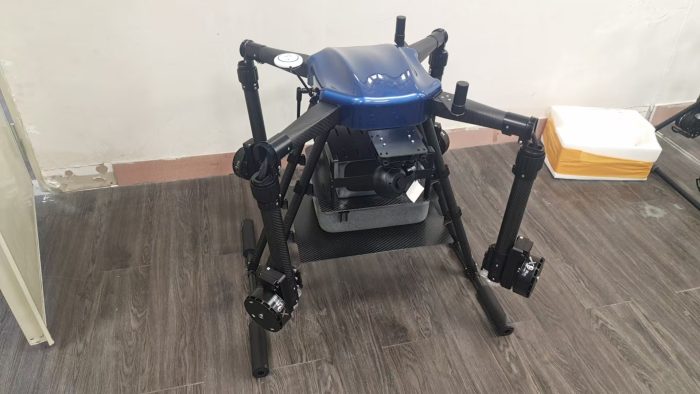![图片[1]-Drone Sprayer Flight Planning Tips: Optimize Efficiency and Safety-msoen](https://www.msoen.com/wp-content/uploads/2025/04/4e0da2d332214638-768x1024.jpg)
The Importance of Flight Planning for Drone Sprayers
Drone sprayers are only as effective as their flight plan. Poor planning can lead to uneven chemical coverage, wasted resources, regulatory penalties, or even accidents. Whether you’re managing a small organic farm or a large commercial operation, strategic flight planning is key to maximizing yields while minimizing risks. In this guide, we’ll explore actionable tips to streamline your drone sprayer operations, from pre-flight checks to real-time adjustments.
- Pre-Flight Planning: Lay the Groundwork A. Map Your Field
- Use GIS Tools: Create detailed 3D maps using drones or satellite imagery to identify obstacles (trees, power lines) and irregular terrain.
- Mark Boundaries: Define no-spray zones (e.g., waterways, beehives) using geofencing features in flight software. B. Check Weather Conditions
- Avoid High Winds: Wind speeds >10 mph can drift chemicals off-target. Use apps like WindFinder or AeroWeather for real-time updates.
- Monitor Humidity: Low humidity increases evaporation, reducing spray efficacy. Plan flights during cooler, more humid periods (early morning or late afternoon). C. Regulatory Compliance
- Review Local Laws: Confirm UAV weight limits, altitude restrictions, and no-fly zones (e.g., near airports).
- Certifications: Ensure your drone meets requirements for pesticide application (e.g., FAA Part 107 in the U.S.).
- Optimize Flight Routes for Precision A. Adjust Swath Width
- Match the nozzle’s effective swath width to your drone’s flight speed. For example, a 10-meter swath requires overlapping passes if flying at 10 m/s.
- Use automated mapping software (e.g., Pix4D, DroneDeploy) to generate optimal flight paths. B. Plan for Obstacles
- Program “no-fly corridors” around trees, buildings, or fences.
- Enable obstacle avoidance sensors (e.g., LiDAR, ultrasonic) for complex terrains. C. Balance Speed and Coverage
- Faster speeds save time but risk uneven coverage. Start with slower speeds (5–8 m/s) for new fields.
- Adjust overlap (20–30%) based on crop density and nozzle type.
- Manage Battery and Payload Efficiently A. Calculate Flight Time
- Divide total field area by the drone’s swath width to estimate required flights.
- Factor in battery life: A 30-minute flight time may only cover 10 acres if frequent turns are needed. B. Optimize Payload
- Fill tanks to 80% capacity to reduce weight and improve maneuverability.
- Use lightweight, corrosion-resistant containers to avoid payload shifts mid-flight. C. Plan Charging Stops
- For large farms, stagger multiple drones or use solar-powered charging stations.
- Keep spare batteries on-site to avoid downtime.
- Adapt to Crop and Environmental Needs A. Adjust Spray Parameters
- Crop Height: Lower altitude for shorter crops (e.g., 2–3 meters for wheat) to improve penetration.
- Nozzle Selection: Use centrifugal nozzles for windy conditions and hydraulic nozzles for precision. B. Monitor Crop Health
- Use multispectral cameras to identify stressed areas and adjust application rates dynamically.
- Schedule flights during critical growth stages (e.g., flowering, fruiting). C. Avoid Environmental Harm
- Steer clear of water bodies to prevent runoff.
- Use drift-reduction nozzles and spray during calm weather.
- Real-Time Adjustments and Post-Flight Analysis A. Stay Alert During Flights
- Watch for sudden weather changes or equipment malfunctions.
- Use live-telemetry dashboards to monitor spray coverage and battery levels. B. Review Data Post-Flight
- Analyze spray maps to identify gaps or overlaps.
- Share data with agronomists to refine future plans. C. Update Software Regularly
- Ensure flight control systems and mapping tools are updated for new features or regulations.
- Common Mistakes to Avoid
- Ignoring Topography: Flying over slopes without adjusting speed can cause uneven distribution.
- Overlooking Maintenance: Dirty nozzles or clogged filters reduce efficiency. Clean equipment after every use.
- Skipping Calibration: Recalibrate sensors and nozzles monthly or after changing payloads.
Conclusion: Plan Smarter, Spray Better
Effective flight planning transforms drone sprayers into precision tools that save time, money, and the environment. By combining pre-flight preparation, adaptive routing, and post-flight analysis, farmers can achieve consistent, eco-friendly results.
Call to Action:
Ready to optimize your drone sprayer operations? Explore our smart flight planning software designed for seamless agricultural workflows. Contact us today to learn how technology can elevate your farm’s productivity!












暂无评论内容